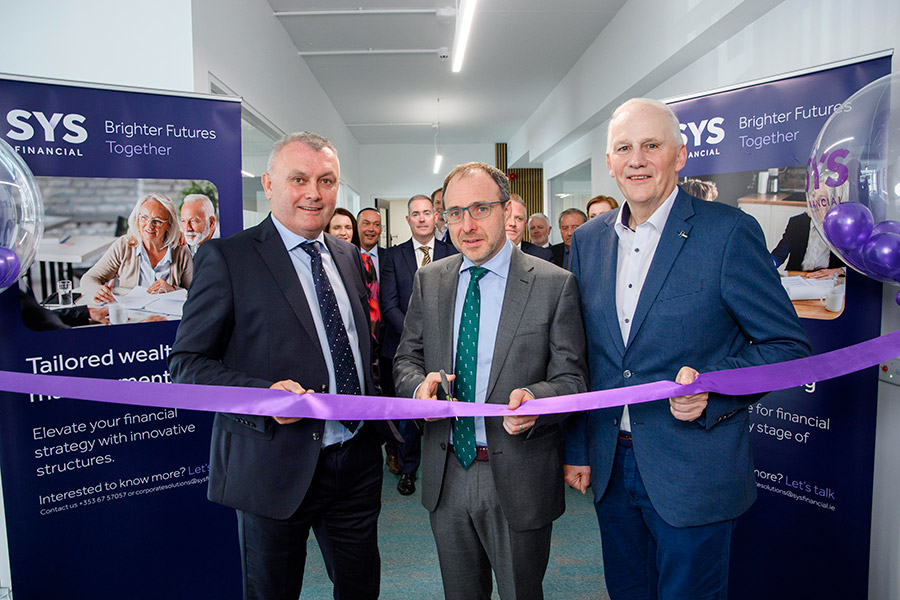The regulatory burden and associated cost for small company pension schemes is set to escalate sharply, writes Chris Sparks.
A shake-up in the governance of Defined Contribution (DC) pension schemes is looming on foot of the EU IORP II directive.
From January 2023, pension scheme trustees will be required to submit an annual compliance statement to the Pensions Authority attesting that they have complied with the directive requirements.
The Pensions Authority’s Code of Practice on foot of IORP II, published in November 2021, runs to 50 pages. The upshot is that the regulatory burden for DC schemes will be increased substantially.
The allied cost burden may not be an issue for mid-sized and large DC schemes but it will be problematic for thousands of small pension schemes.Industry sources say that in a SME scheme where the annual pension contribution is €50,000, the annual regulatory cost could escalate to €20,000 or more.
This is because lay trustees, who dominate small company schemes, will not meet the Code of Practice threshold. So they will have to be replaced or augmented by pricey professional trustees.
According to the latest Pensions Authority data, there are 5,430 DC schemes with one to ten members, and total membership in those schemes is 16,960.
There are 1,040 schemes with 11-20 members, and total membership is 15,500. The Authority also counts 517 schemes with 21-30 members, and the total membership in these DC schemes is 13,000.
There are 470 DC pension schemes in Ireland with over 100 members per scheme, and collectively these schemes have 241,000 members. The same new regulatory burden applies to the minnows as the larger schemes, and the associated costs.

To ease the cost burden, small schemes are being encouraged by the regulator to surrender their independence and enter a master trust structure instead.
A master trust differs from traditional DC pension schemes in that multiple employers coexist under the one trust deed. Pension schemes in a master trust outsource governance and compliance requirements to the trust provider, which may or may not be a life company.
To date, 36 master trust providers have been authorised by the Pensions Authority, and their role is to review investment performance and the scheme’s default investment strategy, and manage relationships with the Pensions Authority and Revenue.
In a recent briefing note, centred on DC schemes with assets of over €25m, PwC pensions specialist Munro O’Dwyer commented that trustee boards fulfil a key role in overseeing the operation of pension arrangements, addressing matters such as investment performance, member costs, ESG and sustainability principles, member engagement and service delivery.
“What is divested in a master trust is the cost and complication of appointing Key Function Holders and performing Own Risk Assessments,” says O’Dwyer. “For employers who have moved to a master trust, having the peace of mind that the governance of their pension plan is being looked after by experts frees up time and budget to focus on how pensions can make a sustained impact for employees.”
Peter McDonnell, director at Willis Tower Watson, advises that there remains an important role for employers who outsource to a master trust. Employers will still be responsible for the contribution structure of their scheme and how the wider reward strategy is communicated, both of which can have a significant impact on savings levels and perceived value.
Writing on the LifeSight website, McDonnell cautions that there can be huge variations in terms of master trusts’ client care, approach to technology, and investment strategy.
“The average member pot size and type of employer is likely to determine the direction of travel for the master trust,” says McDonnell. “Service providers tend to cater for what their average customer looks like. As an employer, think about how much of a voice you want to have in your master trust’s future direction.
"You are likely to have a closer relationship with a master trust with tens of clients than one with hundreds or thousands. Investment is another area where master trusts differ significantly, both in terms of strategy and philosophy.
"You may think cheapest is best or be keen to find a master trust with a sophisticated and well-diversified set of investments."
Joe Creegan, Head of Corporate Life & Pensions at Zurich Life Assurance, believes that where the small employer is the pensionfund trustee, there isn’t much awareness of the IORP II implications.
“They will find out about it soon enough,” he adds. “At the moment it’s typically only the professional trustees that are engaging with the master trust concept.”
Zurich Life established its master trust in November 2021 and all new DC schemes are being directed into the group structure. The company is encouraging its DC pension scheme clients to consider master trust migration, though Creegan adds that transition takes time.
“The process could take up to 15 weeks,” he explains. “There’s a lot of communication involved and there’s a wind-up procedure for the current scheme too. I don’t think we’ve ever undertaken anything as significant as this in my career. At Zurich we’re completing an IT project that will simplify the process. We are starting in May with a first batch and the plan is to get around to everybody before the end of the year.”
Small DC schemes are used to investment control. With master trusts there is a default lifestyle strategy, which broadly means that younger scheme members are parked in riskier products than older members. Creegan stresses that existing Zurich customers who move into the master trust set-up will be able to retain their current fund choices, and that any individual parked into a default strategy can request other investment options.
There is no legal obligation on any company pension scheme to move into a master trust, and Creegan acknowledges that many company owners are reluctant to surrender investment control over fund assets. They can continue do so indefinitely, provided that they conform to a higher standard of regulatory compliance.
For DC schemes going down the master trust route, Creegan stresses that investment performance of the company running the trust should not be overlooked. “One of the messages that we’re trying to get out here is that while a master trust ticks the compliance boxes, employers also need to focus on their level of contributions, and where are they invested in,” he says.











